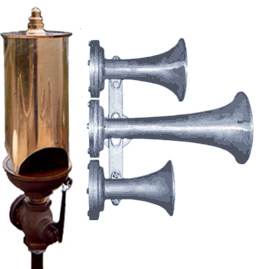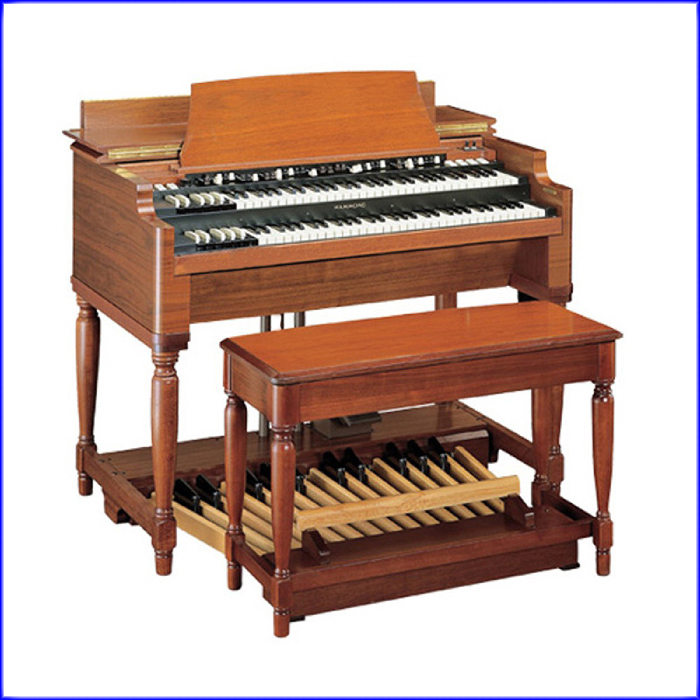
HORN & WHISTLE
Magazine
The Only Publication Devoted
to “The Voices of the Industrial Revolution”
and Related Technologies
- Genl. Subs Info
- Whistle Toots
- how to Submit Articles
- Ads-Advertising
- Back Issues on CDs.
- Latest
- Read Articles
- Paper Editions
- Online E-zine
- Changed your Address?
- Convert Paper to Ezine
- Ezine to paper
- Renew Paper subscr.
- Renew E-zine
- For Sale-Page 1
- For Sale-Page 2
- People
- Access
- Testimonials
- Privacy policy
- B & M Siren
Many H&W readers are at least somewhat interested in this unique electro-mechanical/electronic musical instrument, So we have dedicated these pages of the H&W website to the traditional Hammond organs which operate on the original Hammond Tone Wheel concept. Therefore, we hope you will enjoy these special pages created for you, Hammond Enthusiasts!
Here, for those of you who are interested, I have included a couple of pages devoted to Hammond Organs, or at least to the traditional Hammonds such as the models B3, C3, RT3, A100, and their predecessors. All of these models are essentially the same instrument, the only major difference is the style of the console woodwork with a couple of exceptions. The first exception is the model RT3 which had a standard 32 note pedalboard and included a special pedal solo unit that was independent of the main Hammond tone generating system.

Figure 1. A Hammond B3, the most well-known and widely used instrument that Hammond made.
The other exception was the A100 series which had a complete speaker system included in the console. All of these other Hammond models required separate speaker systems, referred to as tone cabinets, however almost anybody who has ever heard or played a Hammond will agree that the sonic effect of having separate, dedicated speaker systems is greatly superior to the results that you can obtain when a compromise speaker system is built into the confines of a console.
When Laurens Hammond first developed the Hammond Organ, his idea was to make a more practical organ-like instrument that could be used by churches and other establishments that wanted a real pipe organ but either could not afford one, or did not have the necessary room to install a pipe organ. In pursuing this idea, Hammond devised what actually was an entirely new keyboard instrument, unlike anything that preceded it.

Figure 2. Electrically and musically, the Hammond C3 is identical to the B3 with the exception of a different style of woodwork which was considered "more appropriate" for use in church setting.
Because of its novel ways of generating musical tones and making many different sounds, the Hammond organ is really not an organ at all, It is a unique, electro-mechanical music machine that superficially resembles the console of a real pipe organ, and likewise the playing approach to use with a Hammond is similar to the general playing style and technique that would be used with an organ, but other than that, it is a completely different musical instrument.
It is possible to get many tonal effects from a Hammond that are similar to what you can obtain from a pipe organ, but it also was capable of many special tonal effects that we may classify as strictly Hammond sounds, and it is also possible to make many minute variations on both the loudness and the sound of tones that you get from a Hammond. Therefore, it not only quickly found favor with professional musicians, but among other things it became a very useful tuning standard because a Hammond would never go out of tune unless damaged or supplied with power that did not have a steady 60 Hz frequency, and it became, among other things a great source of novelty sound effects that found use in the Science Fiction movies of the 1950s and 60s.
It also made possible a number of small musical groups that, by means of the Hammond, could sound like much larger musical ensembles, and its portability and easy setup, and the use of standard 120 Volt, 60 Hz AC power that is universally used in most of the USA meant that it was now possible to have an organ-like instrument in private homes and even small apartments. Furthermore, it was possible to play it through headphones and thus not disturb neighbors if a Hammond owner lived in an apartment. And yet, it was possible to add external speaker systems, or to play it through suitable PA systems, and thus the Hammond could provide music in large arenas and sports stadiums and with suitable amplification could be loud enough for the largest of venues.
Want to hear a Hammond in action? Here's a link to "TheHAMMONDGuy's" YouTube channel.
Here you'll find many well known traditional popular tunes as well as some interesting novelty tunes played on a B3 Hammond organ. Because of the wide frequency range of this instrument and some of the effects, you will get the best sounding results by playing this through a good stereo speaker system. If you listen to this on a cellphone or other portable device through its built-in speakers, you will not hear these to full advanatge. One suggestion that works well is to use the auxiliary audio output on your device and play it through your car's sound sytem. In many cases, auto sound systems are very good, even the stock audio systems that are supplied as original equipment in cars.